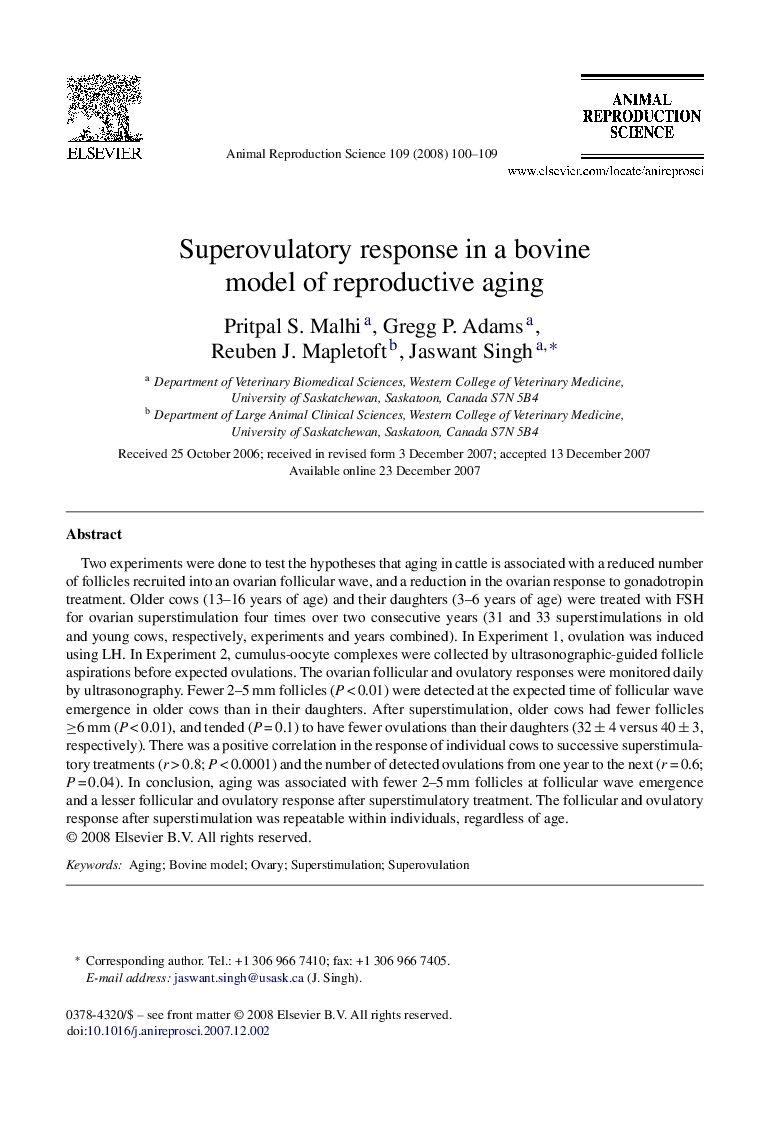| Article ID | Journal | Published Year | Pages | File Type |
|---|---|---|---|---|
| 2074368 | Animal Reproduction Science | 2008 | 10 Pages |
Two experiments were done to test the hypotheses that aging in cattle is associated with a reduced number of follicles recruited into an ovarian follicular wave, and a reduction in the ovarian response to gonadotropin treatment. Older cows (13–16 years of age) and their daughters (3–6 years of age) were treated with FSH for ovarian superstimulation four times over two consecutive years (31 and 33 superstimulations in old and young cows, respectively, experiments and years combined). In Experiment 1, ovulation was induced using LH. In Experiment 2, cumulus-oocyte complexes were collected by ultrasonographic-guided follicle aspirations before expected ovulations. The ovarian follicular and ovulatory responses were monitored daily by ultrasonography. Fewer 2–5 mm follicles (P < 0.01) were detected at the expected time of follicular wave emergence in older cows than in their daughters. After superstimulation, older cows had fewer follicles ≥6 mm (P < 0.01), and tended (P = 0.1) to have fewer ovulations than their daughters (32 ± 4 versus 40 ± 3, respectively). There was a positive correlation in the response of individual cows to successive superstimulatory treatments (r > 0.8; P < 0.0001) and the number of detected ovulations from one year to the next (r = 0.6; P = 0.04). In conclusion, aging was associated with fewer 2–5 mm follicles at follicular wave emergence and a lesser follicular and ovulatory response after superstimulatory treatment. The follicular and ovulatory response after superstimulation was repeatable within individuals, regardless of age.
